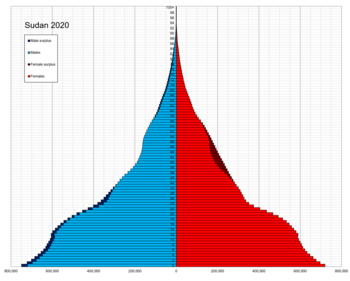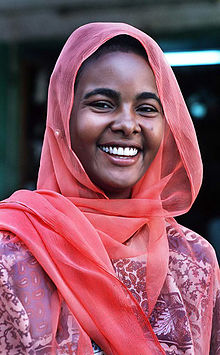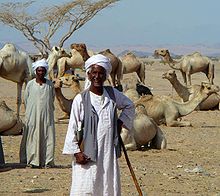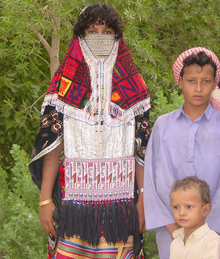
The Ababda are an Arab or Beja tribe in eastern Egypt and Sudan. Historically, most were Bedouins living in the area between the Nile and the Red Sea, with some settling along the trade route linking Korosko with Abu Hamad. Numerous traveler accounts from the nineteenth century report that some Ababda at that time still spoke Beja or a language of their own, hence many secondary sources consider the Ababda to be a Beja subtribe. Most Ababda now speak Arabic and identify as an Arab tribe from the Hijaz. The Ababda have a total population of over 250,000 people.

Sudan, officially the Republic of the Sudan, is a country in Northeast Africa. It borders the Central African Republic to the southwest, Chad to the west, Libya to the northwest, Egypt to the north, the Red Sea to the east, Eritrea and Ethiopia to the southeast, and South Sudan to the south. Sudan has a population of 50 million people as of 2024 and occupies 1,886,068 square kilometres, making it Africa's third-largest country by area and the third-largest by area in the Arab League. It was the largest country by area in Africa and the Arab League until the secession of South Sudan in 2011; since then both titles have been held by Algeria. Sudan's capital and most populous city is Khartoum.

Nubians are a Nilo-Saharan speaking ethnic group indigenous to the region which is now northern Sudan and southern Egypt. They originate from the early inhabitants of the central Nile valley, believed to be one of the earliest cradles of civilization. In the southern valley of Egypt, Nubians differ culturally and ethnically from Egyptians, although they intermarried with members of other ethnic groups, especially Arabs. They speak Nubian languages as a mother tongue, part of the Northern Eastern Sudanic languages, and Arabic as a second language.

The Beja people are a Cushitic ethnic group native to the Eastern Desert, inhabiting a coastal area from southeastern Egypt through eastern Sudan and into northwestern Eritrea. They are descended from peoples who have inhabited the area since 4000 BC or earlier, although they were Arabized by Arabs who settled in the region. They are nomadic and live primarily in the Eastern Desert. The Beja number around 1,900,000 to 2,759,000.
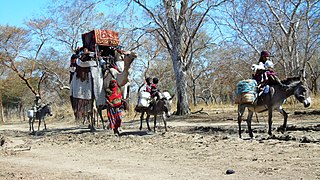
The Baggāra, also known as Chadian Arabs, are a nomadic confederation of people of mixed Arab and Arabized indigenous African ancestry, inhabiting a portion of the Sahel mainly between Lake Chad and the Nile river near south Kordofan, numbering over six million. They are known as Baggara and Abbala in Sudan, and as Shuwa Arabs in Cameroon, Nigeria and Western Chad. The term Shuwa is said to be of Kanuri origin.

Sudanese Arabic, also referred to as the Sudanese dialect, Colloquial Sudanese or locally as Common Sudanese refers to the various related varieties of Arabic spoken in Sudan as well as parts of Egypt, Eritrea, Ethiopia, and Chad. Sudanese Arabic has also influenced a number of Arabic-based pidgins and creoles, including Juba Arabic, widely used in South Sudan, as well as Ki-Nubi, spoken by the Nubi communities of Kenya and Uganda.

Western Bahr el Ghazal is a state in South Sudan. It has an area of 93,900 km2 (36,255 sq mi) and is the least populous state in South Sudan, according to the controversial Sudanese census conducted in 2008. It is part of the Bahr el Ghazal region. Its capital is Wau. The state shared international borders with Sudan to the north and the Central African Republic to the west. The portion now occupied by Raga County is the southern part of the historical region known as "Dar Fertit".

Arabization or Arabicization is a sociological process of cultural change in which a non-Arab society becomes Arab, meaning it either directly adopts or becomes strongly influenced by the Arabic language, culture, literature, art, music, and ethnic identity as well as other socio-cultural factors. It is a specific form of cultural assimilation that often includes a language shift. The term applies not only to cultures, but also to individuals, as they acclimate to Arab culture and become "Arabized". Arabization took place after the Muslim conquest of the Middle East and North Africa, as well as during the more recent Arab nationalist policies toward non-Arab minorities in modern Arab states, such as Algeria, Iraq, Syria, Egypt, Bahrain, and Sudan.
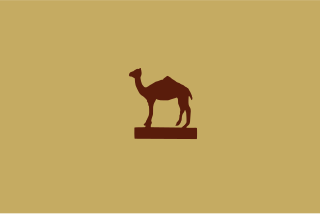
Kordofan is a former province of central Sudan. In 1994 it was divided into three new federal states: North Kordofan, South Kordofan and West Kordofan. In August 2005, West Kordofan State was abolished and its territory divided between North and South Kordofan States, as part of the implementation of the Comprehensive Peace Agreement between the Government of Sudan and the Sudan People's Liberation Movement. West Kordofan was reestablished in July 2013.

The Bishari are a Cushitic ethnic group who live in parts of Northeast Africa. They are one of the major divisions of the Beja people. Apart from local dialects of Arabic, the Bishari speak the Beja language, which belongs to the Afroasiatic family of the Cushitic branch.
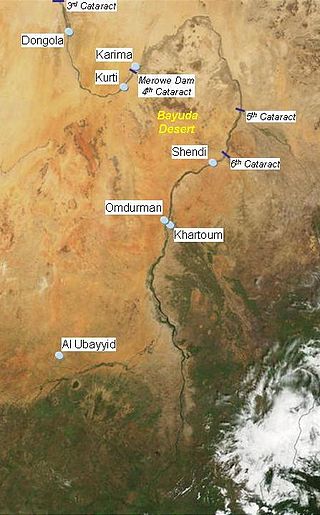
The Shaigiya are an Arabized Nubian tribe. They are part of the Sudanese Arabs and are also one of the three prominent Sudanese Arabs tribes in North Sudan, along with the Ja'alin and Danagla. The tribe inhabits the region of Dar al-Shayqiya, which stretches along the banks of the Nile River from Korti to the end of 4th Nile cataract and includes their tribal capital of Merowe Sheriq and parts of the Bayuda desert.
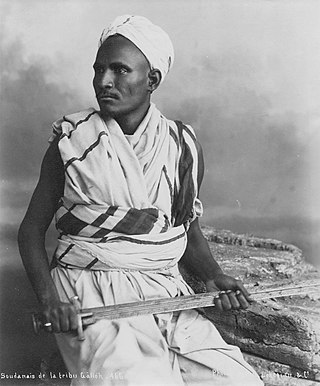
The Ja'alin, Ja'aliya, Ja'aliyin or Ja'al are a tribal confederation and an Arab or Arabised Nubian tribe in Sudan. The Ja'alin constitute a large portion of the Sudanese Arabs and are one of the three prominent Sudanese Arab tribes in northern Sudan - the others being the Shaigiya and Danagla. They trace their origin to Ibrahim Ja'al, an Abbasid noble, whose clan originally hailed from the Hejaz in the Arabian Peninsula and married into the local Nubian population. Ja'al was a descendant of al-Abbas, an uncle of Muhammad. The Ja'alin formerly occupied the country on both banks of the Nile from Khartoum to Abu Hamad. According to a source, the tribe allegedly once spoke a now extinct dialect of Nubian as late as the nineteenth century. Many Sudanese politicians have come from the Ja'alin tribal coalition.

The Hedareb or T'bdawe are a Cushitic ethnic group native to northwestern Eritrea. They are a subgroup of the Beja. They are more diverse than the other Eritrean ethnicities; one subgroup speaks the traditional Beja language, which belongs to the Cushitic branch of the Afro-Asiatic family, while another is more closely related to Sudanese Hadendoa. They are among the least-researched groups in Eritrea.

Sudan is a multilingual country dominated by Sudanese Arabic. In the 2005 constitution of the Republic of Sudan, the official languages of Sudan are Literary Arabic and English.

The Arab world consists of the 22 members of the Arab League. As of 2023, the combined population of all the Arab states was around 473 million people.

Sudanese Arabs are the inhabitants of Sudan who identify as Arabs and speak Arabic as their mother tongue. Sudanese Arabs make up 70% of the population of Sudan, however prior to the independence of South Sudan in 2011, Sudanese Arabs made up only 40% of the population. They are Sunni Muslims and speak Sudanese Arabic.

The official languages of the Central African Republic are French and Sango. In total there are about 72 languages in the country.

Arab Muslims are the largest subdivision of the Arab people and the largest ethnic group among Muslims globally, followed by Bengalis and Punjabis. Likewise, they comprise the majority of the population of the Arab world. Currently, around 93% of Arabs are Muslims, while the rest are mainly Arab Christians, as well as Druze and Baháʼís.

South Sudan is home to around 60 indigenous ethnic groups and 80 linguistic partitions among a 2021 population of around 11 million. Historically, most ethnic groups were lacking in formal Western political institutions, with land held by the community and elders acting as problem solvers and adjudicators. Today, most ethnic groups still embrace a cattle culture in which livestock is the main measure of wealth and used for bride wealth.
Bedaria is an Arab tribe in Sudan. It is part of the Ja'alin tribe and constitutes a large portion of Sudanese Arabs. They speak Sudanese Arabic and are Sunni Muslims.
